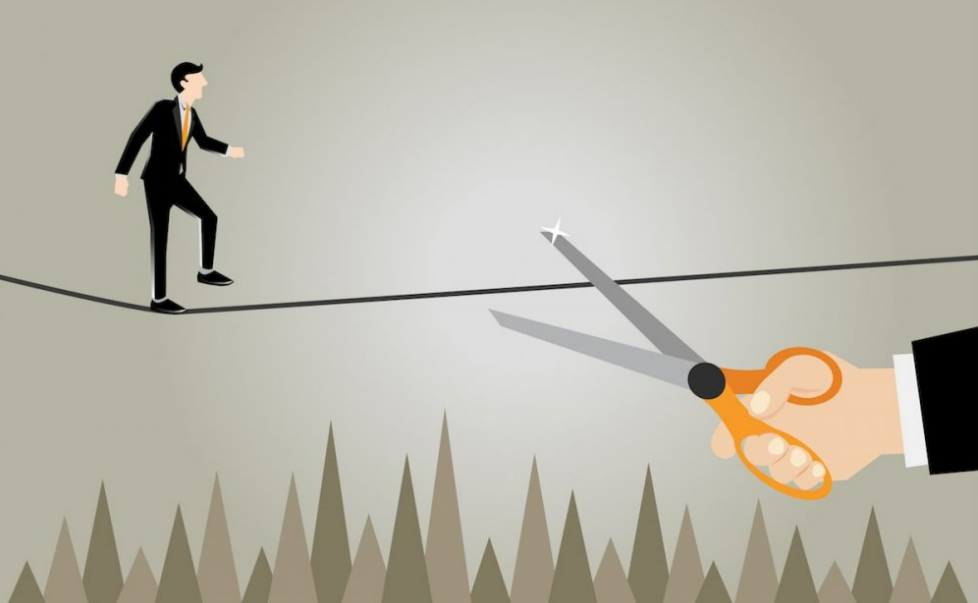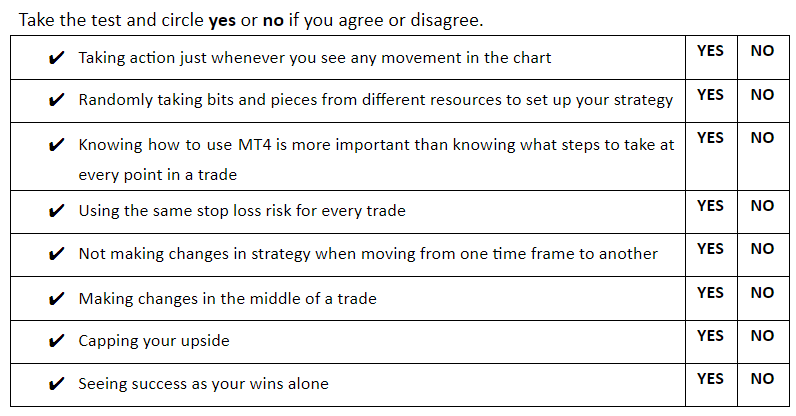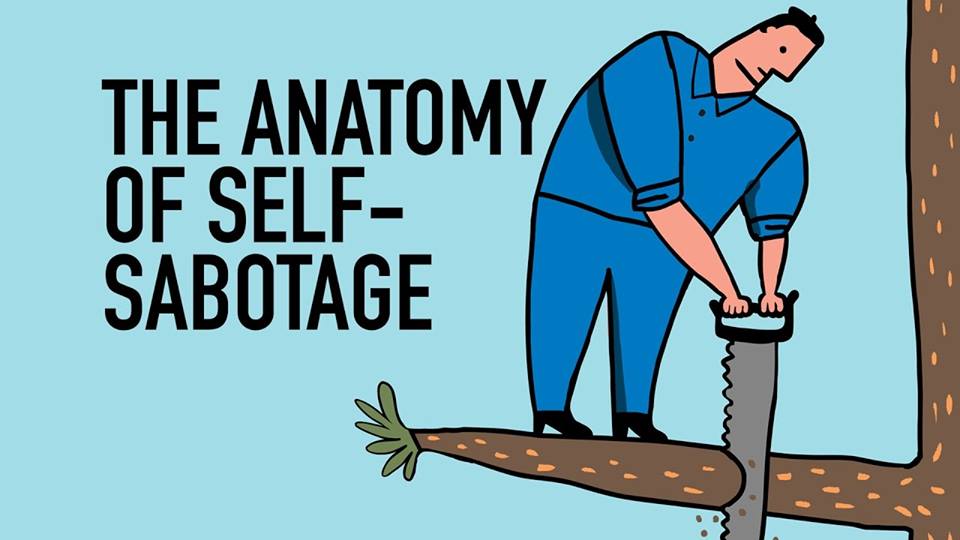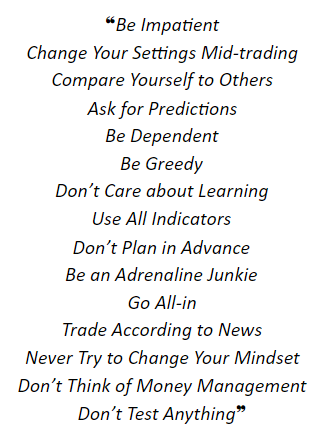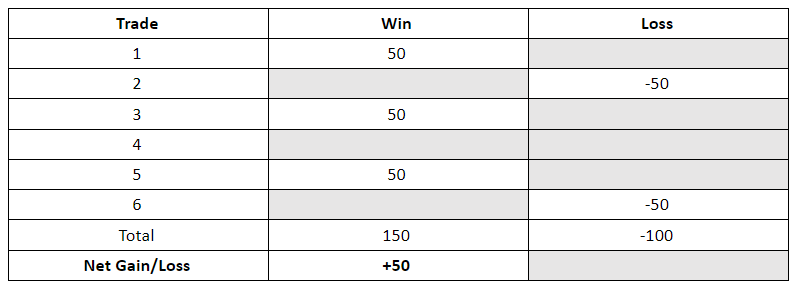We’ve covered money management, trade management, and trading psychology’s biggest strategy sabotaging tactics in the first three articles of this series, and now, we are down for our last eye-opening conversation on this topic.
There are some questions we don’t ask because no one told us that other options exist. While this is definitely not the only way of looking at things, we certainly believe that this dialogue is very much needed in the trading community.
You know the saying…When the student is ready the teacher will appear (Tao Te Ching). Maybe this rhetoric gives you the insight you’ve been looking for.
- Part 4: Don’t Look Beyond
When traders first start learning about their market of choice, they are a tabula rasa, a new notebook waiting to be filled with knowledge and wisdom. At this critical stage, like children who gradually learn to be less honest because it is socially unacceptable to utter certain truths, traders are also conditioned to look at things in a certain way. Still, as human beings, we are blessed with analytical skills we need to rely on to create our own path, our own success story.
That’s why, when we first get to read about different trading markets, we need to understand the essential differences between them, such as the intricate nuances that separate the forex market from the stocks market.
A lot of resources suggest that money is made when you buy low and sell high, but we’d like to throw in a little twist here to possibly give you a perspective of where this narrative is coming from.
If we are speaking about the forex market, many experts ask how we can discuss if something is overbought and oversold when currencies essentially have no value of their own. The days of the gold standard are long gone, so what we have nowadays is fiat currencies that, unlike equities, have no intrinsic value.
When we look at a specific stock, there are many things we can rely on to determine its price. With currencies, however, we don’t think of balance sheets or products; we only depend on major banks to drop the news concerning prices.
This is one among many subtle (or not so subtle) distinctions that might seem very insignificant. Nevertheless, it’s like with changing companies – you need to understand the company culture to see if you’d fit in even though the position is the same. Here too, we are traders in either case, but some rules of the game differ.
So, what do you think happens when the money floods into the market? With stocks, it is clear – the money comes in, the price follows accordingly. Forex, like some experts, like to explain, does the opposite. When the money comes in, the prices run in the opposite direction.
Why do you think so many traders fail at trading currencies? They swarm in like bees, making massive concentration in one area of the chart, and guess what happens next…the big banks step in and pull the rug from under their feet.
The big banks use all the technology they can to see where the money is going to go next. If something is headed long, they will change it to short. This is how the big banks take the cream off in this market, which does not happen with stocks. So, how the price goes up and down is entirely different in these markets.
Now here is another topic to contemplate – reversal trading. This is one of the favorite topics on trading blogs as well as one we should definitely ponder on more deeply. Reversal traders seem to be the key players in this game of price change. Why? Big banks don’t need trend traders, professionals claim. They need reversal traders for the show to go on.
While some traders are trying to call a reversal, big banks are “secretly” waiting for the right moment to wreak havoc. That’s why this scenario has been repeating on and on all this time. Most traders get into this collective loop of waiting for a currency to reverse itself for a long time. Do you know when a reversal really happens? ….only when the majority of reversal traders give up on waiting.
You can always find proof of this if you look up client sentiment online or even observe the charts. You will see how the big banks keep traders immersed in this fixation by calling a reversal with sporadic crumbs of small wins. But, in the end, the majority losses because the majority does not possess this information. They did not read or learn what we talked about in the previous articles of this series and they do not understand what makes them obsess about something that keeps making them lose.
The most important thing is to try and look and not just disregard and toss everything that doesn’t resemble mainstream thinking. Whatever is prevalent temporarily may not carry the information you need in the long term. Also, whatever is present online is not necessarily true or good for us, which is something we can see in other areas of our lives as well. Why would you let your ignorance be the reason why others become rich?
Another important topic that is closely related to what we discussed above is your toolbox. What do you have on you to tackle current challenges? Many traders use indicators that are not only designed for other markets but that is also so old and thus useless at present. Forex traders in particular are known for using tools that were specifically made for trading stocks even to this day after so many indicators have been made only for trading currencies. Why this happens lies in the fact that many people are unwilling to search and test, but this is the only viable way for anyone to become professionally and financially satisfied doing what they do.
What we really want to stress here is that you need to think for yourself and think outside the box. We cannot let popular or widespread ideas dictate what we should do. The number of traders who fail is absolutely unbelievable. Don’t make yourself be just another statistic. You can do much more with just a little more effort on your behalf.
And…this is the end of this journey. Remember to look beyond and test everything because you deserve better – better trading, better results, and a better life. Good luck!

